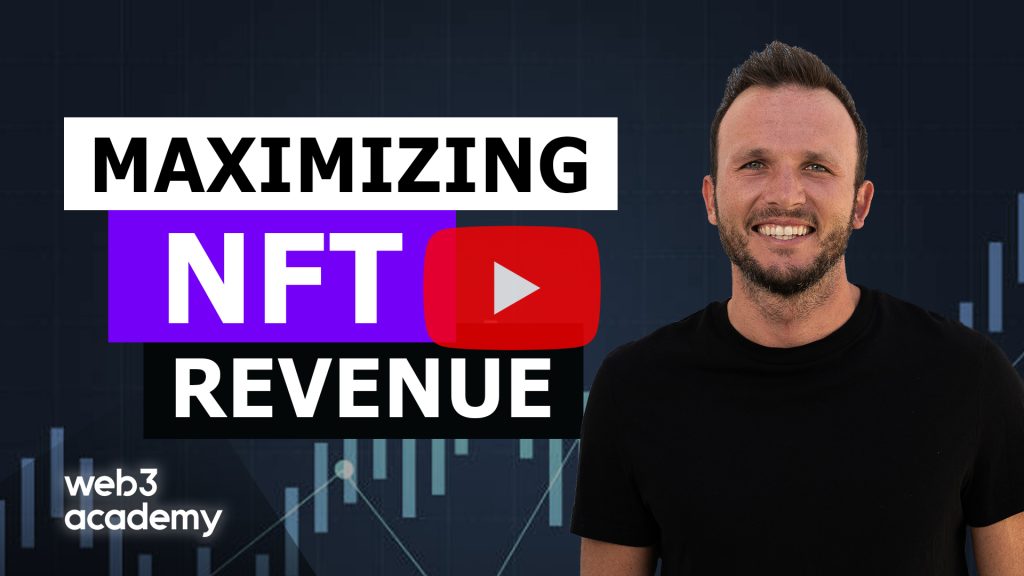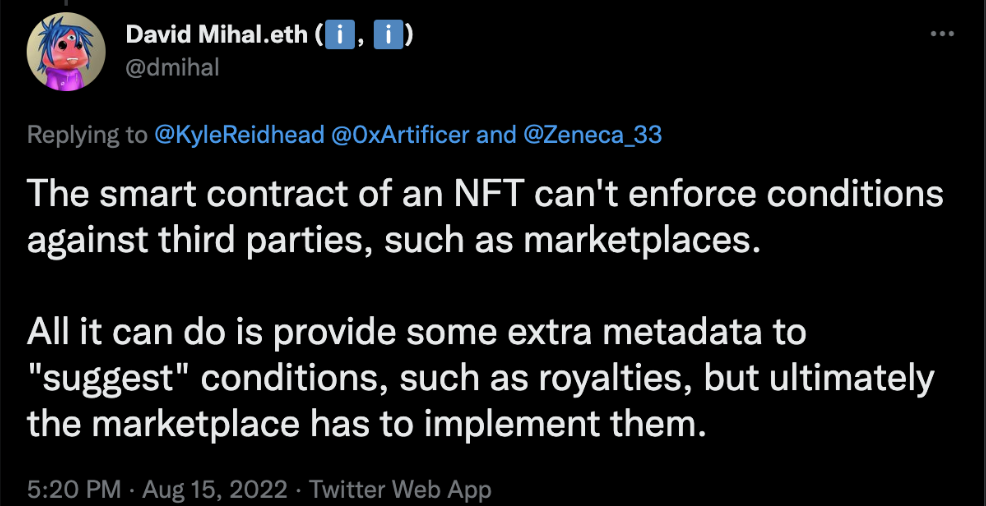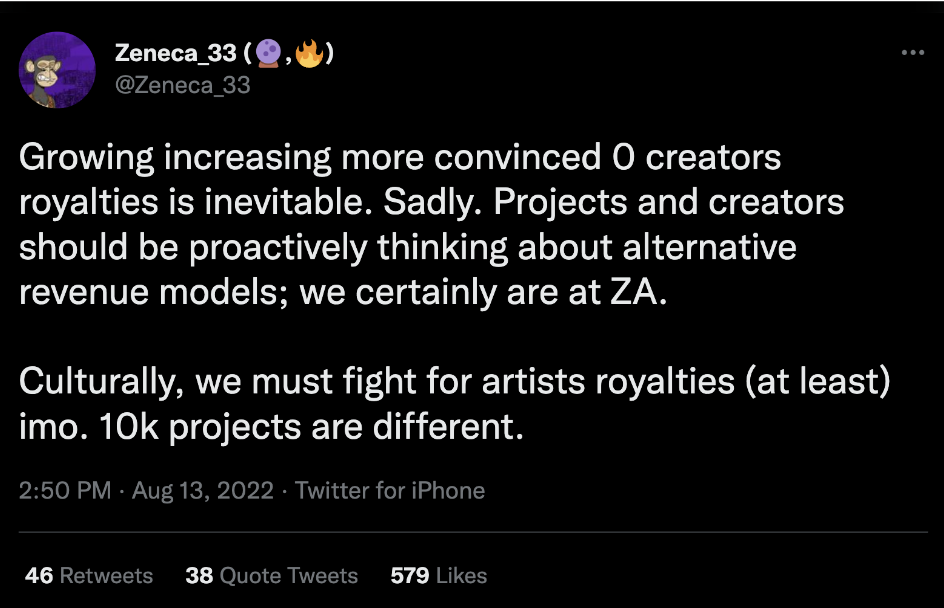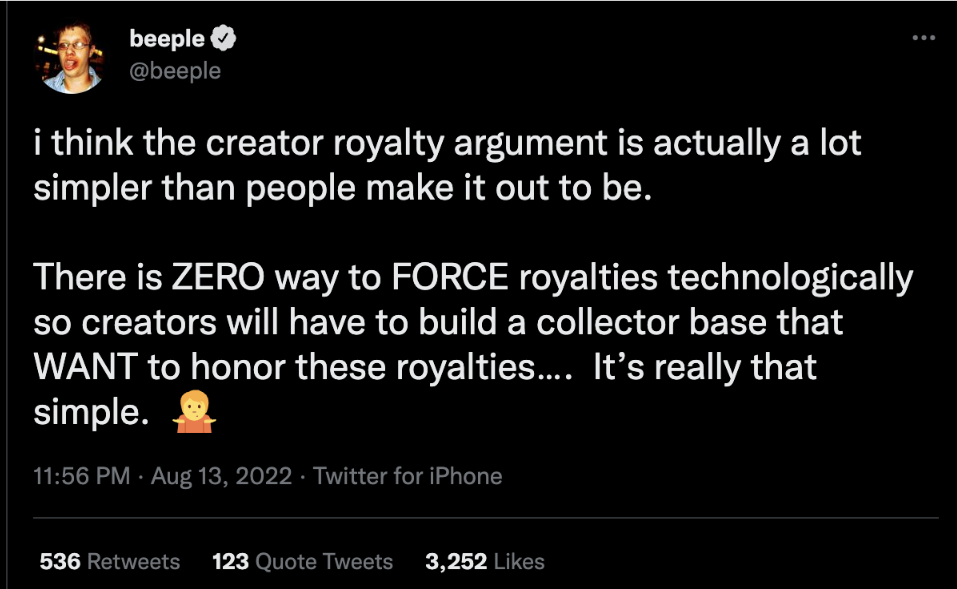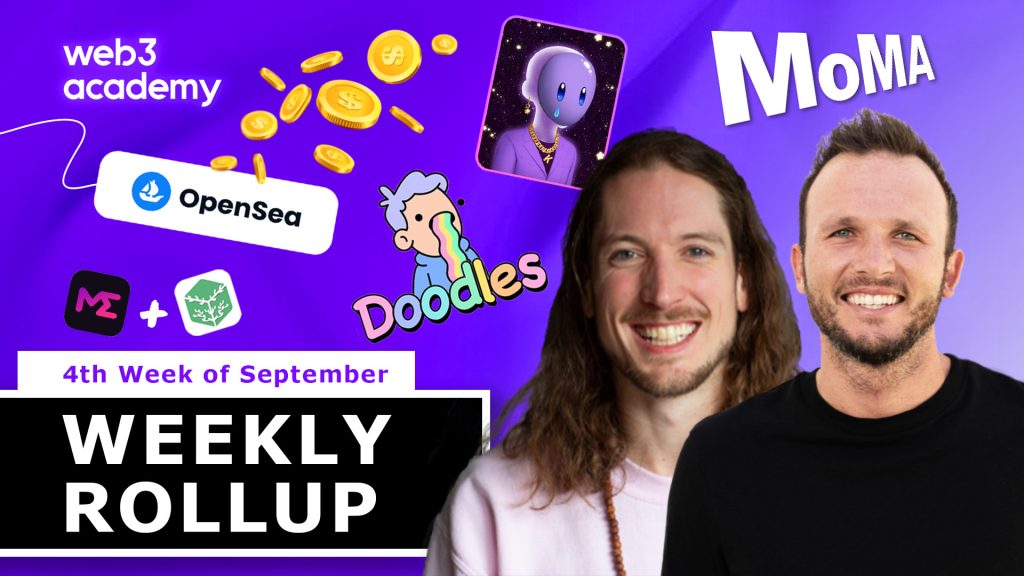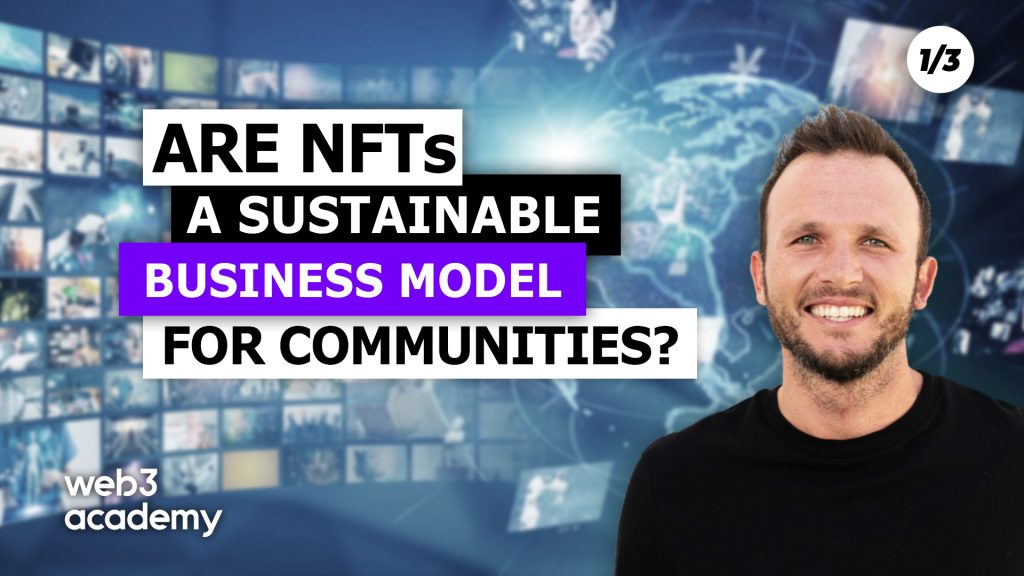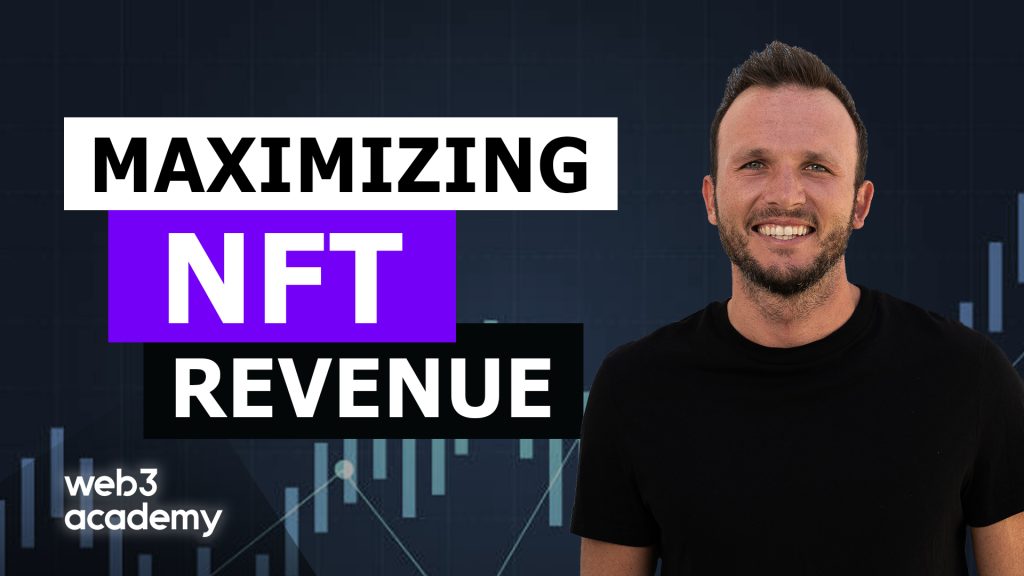
The Truth About NFT Royalties and How Creators Can Maximise NFT Revenue
Dear Web3 Academy DOers!
Royalties on NFTs, one of the great unlocks of Web3 right?
Not so fast…
Turns out, Web3 doesn’t really have a solution for royalties after-all 😕
I mean, royalties are definitely possible on NFTs, don’t get me wrong. It just might not be what many of us thought.
…By the way, in case you’re unaware, NFT royalties are a means by which a % of the value of an NFT transaction is given back to the original creator of the NFT, typically in the range of 2.5% – 10% of a transaction.
But what has been gaining a lot of attention lately, thanks to the new NFT marketplace SudoSwap, is that royalties on NFTs can be circumvented.
In fact, Sudoswap has decided to do just that for all NFTs sold on their platform
But, how is that possible? Isn’t it written in the code? Isn’t Web3 all about immutability and permissionless exchanges?
Well yes, Web3 is all about those things.
However there are limitations to what it can and can not enable and it turns out that royalties on NFTs might be one of them 😧
Don’t worry my fellow readers, it’s not all bad news!
In this article I’m going to explain why receiving NFT royalties is not a guarantee and what you can do to ensure that you make the most from your NFTs.
Let’s go 🚀
Wait 🚥 Not into reading? 📖
Sit back and watch on Youtube 👀 or listen on Spotify or Apple Podcasts 🎧
Are Royalties On NFTs Enforceable at the Smart Contract Level?
The simple answer is no, they are not.
I posed this question on Twitter to find out why and received some great responses from some big brains in the space.
Julian Genestoux, founder of Unlock Protocol explained that you can’t because…
And David Mihal, founder of Cryptofees.info and Cryptostats also chimed in and explained the following…
The TL;DR is that it’s not possible to hard code royalties into an NFT which MUST be implemented by everyone who interacts with it (marketplace or user wallet).
What’s possible today is that you can code in some data and should the marketplace decide to implement that data, then it works without any problems. However they do not have to.
Ultimately, what this means is that we have to trust the marketplaces (or the purchasers) to honour the royalties for the creators.
Trusting third parties is one of the main reasons we are rebuilding the internet in the first place, so unfortunately, we know where this ends up.
Thankfully, this far into web3’s early life, the large NFT marketplaces have decided to honour and pass along the royalties to creators. However, a new marketplace in town called SudoSwap has decided to exclude them completely.
In an industry which is full of speculators and traders, the extra profit earned by saving on royalties has attracted many to move from marketplaces like Opensea over to the low fee and royalty free marketplace, SudoSwap.
Competition like this almost always results in a race to the bottom (aka 0).
Potential Options for the Future of NFT Royalties
There are a few options here on how this may turn out.
1. Devs, do something! Build an on-chain royalty standard…
As I mentioned above, the ability to implement NFT royalties on-chain does not currently exist. That doesn’t mean it can never exist, however.
To be clear, most developers in the space are saying it’s simply not possible, so maybe I’m being overly optimistic here. But if there is one industry that is known for solving massive problems and innovating quickly… It’s Web3!
There have already been a few proposals in the Ethereum community to start working on creating an on-chain standard for NFT royalties, including EIP-4910 and EIP-2891.
TBD on how this will play out.
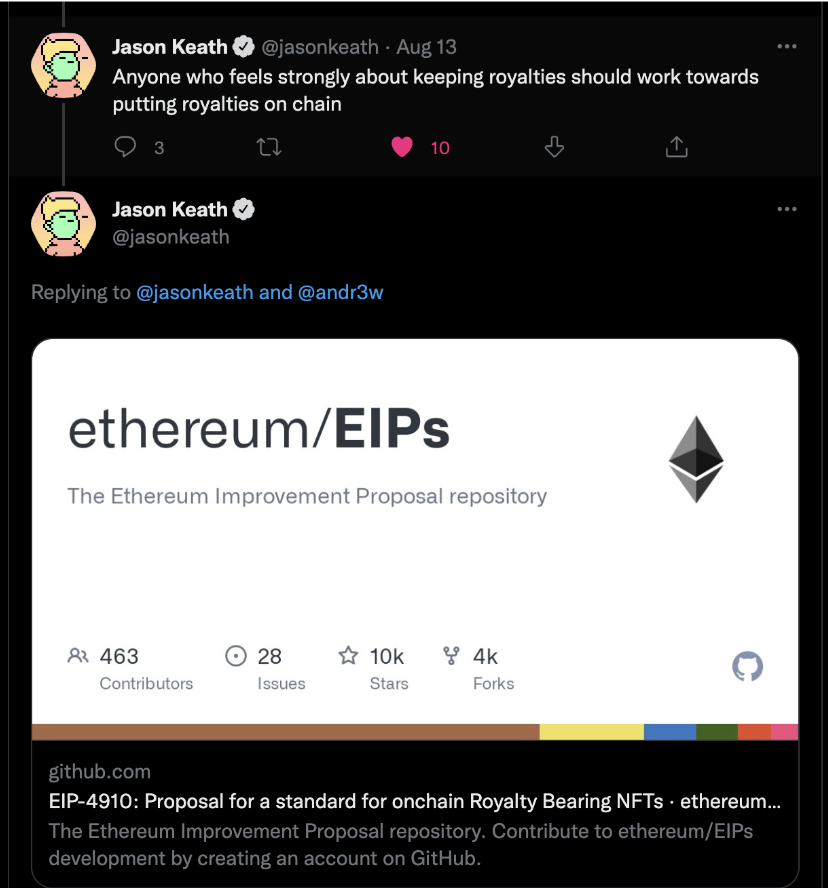
2. Create an NFT royalty standard at the community / culture layer
Never underestimate the power of community, especially in Web3.
Sometimes we need to rely on the social layer to set standards and incentives.
There is a possibility that if we can’t figure out how to build this on-chain, the community itself can enforce these standards across the industry.
NFT marketplaces are an open and free market and can choose to charge or do whatever they want. However, let’s remember that they are a business in an industry built on top of interoperable technology.
Unlike users on Facebook where we are essentially stuck with our profiles, followers and content on that platform, users on NFT marketplaces can simply move to any marketplace seamlessly with a click of a button.
Should the community decide NFT royalties are important, we can simply “vote” and enforce rules by choosing where we buy and sell our NFTs.
Jeff Kauffman, founder of JUMP went as far as to say that honouring NFT royalties would be a form of marketing for the NFT marketplace.
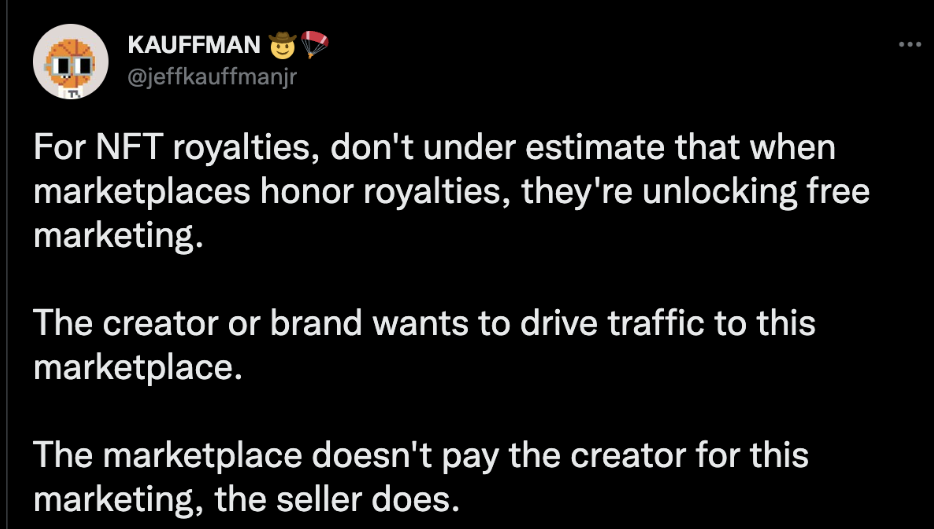
While I tend to agree with this statement in the short-term, I believe as the industry grows and becomes more mainstream these Web3 ethos won’t hold up.
In my opinion, these ethos need to be written in code and become trustless for them to continue. Overtime, humans and especially businesses tend to trend along the lines of being greedy and looking for the most profitable way of doing things.
A final interesting thought that I came across on this is the idea of tipping in countries like the US. Tipping is not law, however it has become a cultural norm in a few countries around the world. Maybe we can accomplish something similar here.
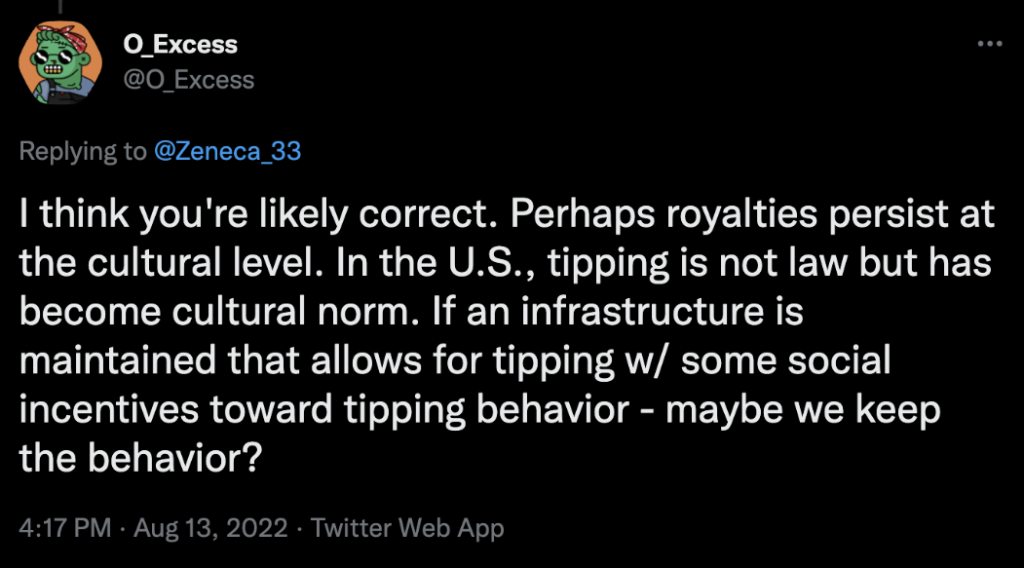
3. Build a collector base that WANTs to pay royalties or create additional revenue streams
Beeple summed it up nicely here…
Build a strong community and fan base like the best artists in the world have always done and people will be willing to pay whatever you want for your art.
The big takeaway here is that NFTs are simply a tool for your business. It doesn’t matter if that business is an exclusive community, art, membership access or something else.
If you want to get paid for your work, you need to create great work which provides real value to your collectors / customers.
In 2021 people simply thought that if they created an NFT they would simply make a bunch of money. And to be honest, the market was so immature and euphoric that this was essentially true.
The market is now maturing and people are realising that an NFT is not a magic way to make money, it’s simply a tool to enable digital ownership, permissionless commerce and programmability to a product / service.
So let’s talk about what creators can do to maximise their revenue when using NFTs.
How Can NFT Creators Maximise Their Revenue?
My recommendation is to not rely on royalties for your business.
Like any business, it’s important to diversify your revenue streams. Think about other business models or avenues to generate revenue.
Royalties can be one revenue stream for your NFT and if paying royalties ends up working out then that is pure gravy.
But in case they don’t, there are many other options for you. Here are a few examples we’ve seen so far in the industry:
1. Withhold a % of your collections supply for future profits
Taking a piece out of the playbook from NFT OG LarvaLabs (creators of CryptoPunks, Meebits and Autoglyphs), LarvaLabs withheld 10% of the supply of CryptoPunks (1,000 NFTs) and launched with 0 royalties as a feature of the collection.
Overtime, as cryptopunks gained adoption and value they sold off some of that supply and then finally sold all of it when YugaLabs acquired the IP rights to CryptoPunks.
You can think of this similar to holding onto equity or shares in a company. As it grows in value the founders tend to take profit in the form of selling equity in their company.
2. Intellectual Property
There is a lot of experimenting going with IP for NFTs, so I won’t give an exact model to use here, instead I’ll share some things to think about.
I just mentioned how LarvaLabs sold the rights of CryptoPunks to YugaLabs, so there is a revenue stream in and of itself.
If you created the typical 10k character / avatar / pfp NFT to represent a community, you could then build additional businesses / products around those NFTs, whether that be merch, digital content like a show or movie or even a video game.
There are many ways to monetize the brand or IP of whatever it is you create. There is even potential that your NFT holders will do it for you, it just depends how you incentivize the community.
3. Subscription-based NFTs
This likely doesn’t work as well for art NFTs, but definitely community-based NFTs, SAAS products and so on. You can create NFTs which expire at a certain time (1 month, 1 year, etc.) and are burned unless the subscription payment is made.
Or take it one step further whereby only people who pay and hold your subscription NFT are able to buy/mint your other NFTs. Almost like an exclusive access membership for your top fans.
This would give you an ongoing revenue stream and likely ensure that those buying your art will honour the royalties.
There is a lot of potential here for many products using subscription-based NFTs.
4. Harberger Taxes
These are similar to property tax, you pay a monthly/yearly “fee” to keep your token. If you don’t pay, you lose it.
This type of payment can actually be programmed on-chain into the contract, unlike royalties, as herberger taxes are not related to peer-to-peer or marketplace transactions.
This is a different concept than most people are used to, so it’s hard to say how well this would go over, but another option nonetheless!
These are just a few ways that you can create additional revenue streams from the NFTs that you create.
Conclusion
I fully support creators receiving royalties on their NFTs and feel optimistic that Web3 will find a solution to this problem.
My hope is that we can find a way to solve this problem on-chain rather than relying on trust, as history shows that trust rarely works out in the long run.
That said, it’s important to understand that royalties may never be enforced at the smart contract level which means there’s always a risk that creators won’t be paid the royalties they deserve.
This is why it’s so important to never rely on NFT royalties as the only revenue stream for your business. Instead, you should look to diversify and find additional means to generate revenue from your NFTs.
The other important factor to recognize here is that if you can build a strong community or collector base, you can always find a way to win one way or another. Like everything in Web3, community is the foundation upon which success is built.
My recommendation to all creators out there is to start by building a community around your mission & vision.
Then be open and transparent with the community and use them to experiment with different forms of NFTs and payment options until you find something that works.
The NFT space is so early and we are still in the learning phase so there is no perfect model yet. In the meantime, it definitely doesn’t hurt to start creating, building and experimenting on your own.
Who knows, maybe you’ll be the next LarvaLabs, paving the way for millions of NFT creators coming after you!
Don’t forget! We’re still early… 👇

Kyle Reidhead
Founder of of Web3 Academy & Impact Digital Marketing
Twitter
🚀 Action Steps For Web3 DOers 🚀
👉 Reply to this email with Yes or NO, to let us know if you knew about royalties not being enforceable on-chain before this week.
👉 Follow Web3 Academy on Twitter!
👉 Take our FREE Web3 Rabbit Hole Course to get up-to-speed on the foundational components of Web3 so you can confidently build, work, or use the fastest growing technology in history

